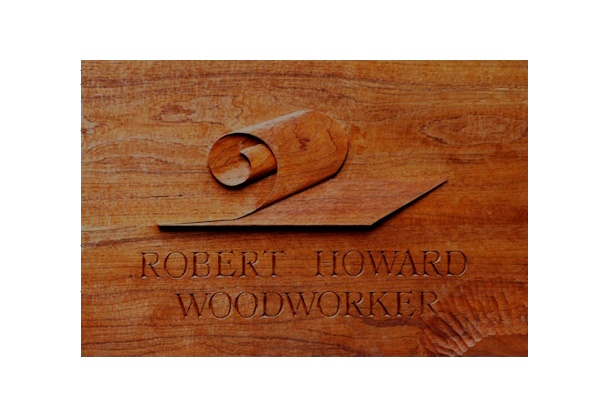I had the great good fortune to visit Sam Maloof’s workshop twice in 1980-81, while I was living and working in Los Angeles. That was my introduction to his chairs, and, in particular, to his well-known leg joints. It was not until about 1984, this time while I was living in (West) Germany, that I was able to use that experience while designing my own chair. It was my intention to use Sam’s joints when the time came to build my first prototype. Although I did not know it at the time, it would be 1990-91 before that happened, because, at that time, I had not made a single piece of proper furniture in my life. I had to learn to be a woodworker first.
The Maloof joint, for the front leg of his chairs, was quite straight forward, and did not require any special tooling (see Fig 1 – Diagram from Fine Woodworking Magazine Issue #25 Nov-Dec 1980 p54)). The leg was at 90 degrees to the seat, and was easily cut using a table saw and a router. The back leg, however, was only square to the seat in side elevation. In the front elevation it had a few degrees of cant, and to cut this, Sam used two custom made router bits, one at 90 degrees plus the cant angle, and the other 90 minus the cant angle.

When I was designing my own chair, one of my explicit desires was to not make any design compromises in order to make the chair easier to build. There were many consequences of this decision. In particular, none of the legs were square to the seat in either front or side elevation, and although that changed as my design evolved, in the beginning it determined the design of my leg joints. If I was to use the Maloof joint, it would mean 2, 3, or event 4 sets of customised router bits to create all the rebates in the joints, and a complex dance of bit changing when making a complete chair. Worse, the expense of the bits would make me reluctant to change any joint angle in the future, so I would be hobbling the evolution of the design right from the beginning.
I pushed on regardless, and decided that I would simply do without the rebates around the housings in the seat block, and instead house the seat block in two dados cut into the sides of the legs. This I finally did on the first chair I made – a rocking chair made from Coachwood. Designing and building a chair like this presents a seemingly endless procession of problems to be dealt with, and, overall, I was satisfied with the result at the time. I was also aware that my joint design was not the solution I hoped it would be.
One of the many beautiful features of the Maloof chairs was the way the various components flowed seamlessly into each other. In the leg joints, this flow was facilitated by a sculpted radius where the different components met each other. Those radii were only possible because of the rebates, and were not possible with my dadoes (see Fig 2). So, it was back to the drawing board for me.
It did not take long to find a possible solution. As you can see from Fig 3, the Maloof joint could be approximated using a simple housed joint with two keys fitted into keyways cut into the seat blank on one side, and the chair leg on the other. These keys would lock the legs in place. With great excitement, I began work on another chair, this one a craver chair made of New Zealand Beech.

Once more my hopes were dashed. The idea worked well enough. However, the cutting of the keyways in the seat block proved diabolically difficult in practice, as one keyway in each joint had to be cut against the grain in just about the worst orientation possible (see Fig 4). Once more I was stumped.

The solution to my problem was such a profound epiphany that I still remember with vivid clarity exactly where I was and what I was doing when the idea hit me. I was sitting quietly, waiting for my young son to go to sleep, when I realised that the keys in the leg joints did not have to be square or rectilinear. They could be round, and the keyways could be drilled, after the legs were glued and screwed in place. Problem solved.
Making this join is illustrated, step by step, in the photos below. The joint shown is only angled to the seat in one direction, and is square in the other, but it could just as easily have been angled in both. Note that these photos only show the joint made as a demonstration and not a complete leg on an actual chair.
Some of the steps included in the photos:
- fitting the leg into the housing
- marking the joint onto the leg
- rough shaping of the leg
- beginning to sculpt the leg
- gluing and screwing the leg in place
- drilling down the joint line for the dowels
- fitting the dowels made on the lathe
- shaping the end of the dowels
- sculpting the bottom of the seat
- sanding
It still amazes me that the solution was so simple, but so difficult to arrive at. I do believe that this joint is more versatile, and stronger, than the Maloof joint, and about as simple to make. And it does not require any custom made router bits, or a router at all, and that is always a big plus in my book.


















Recent Comments